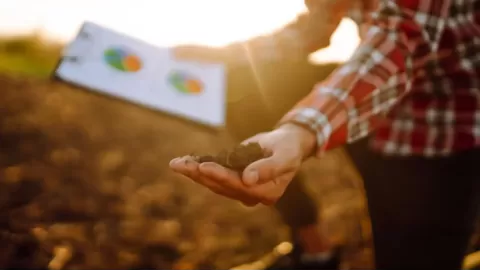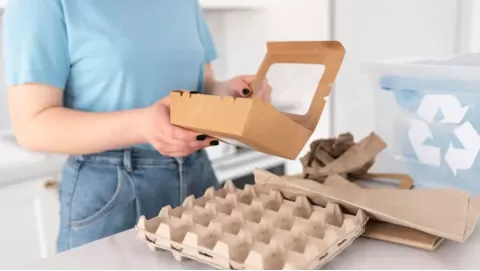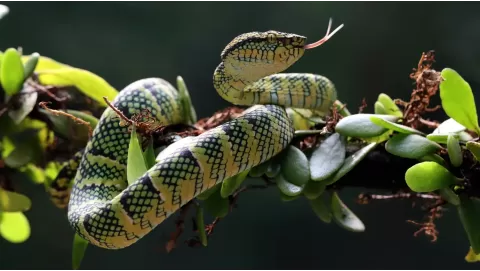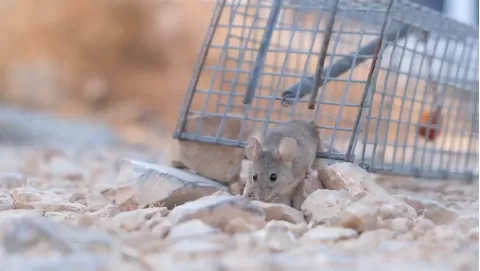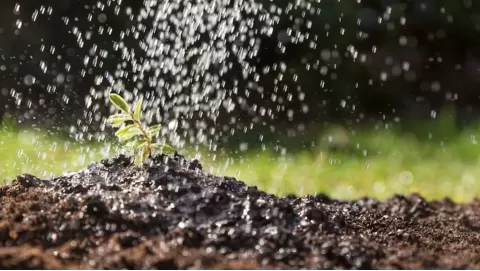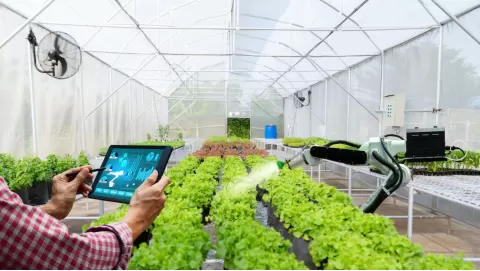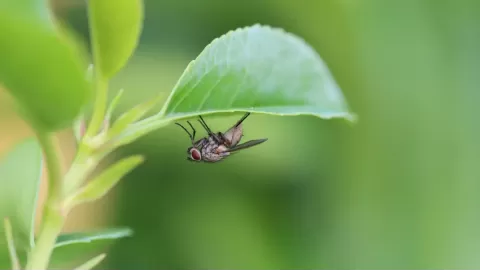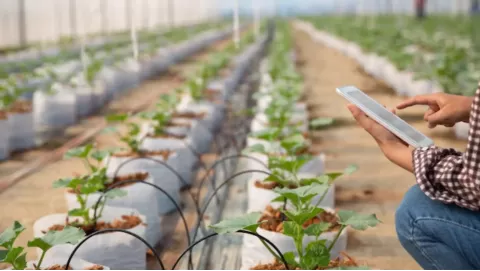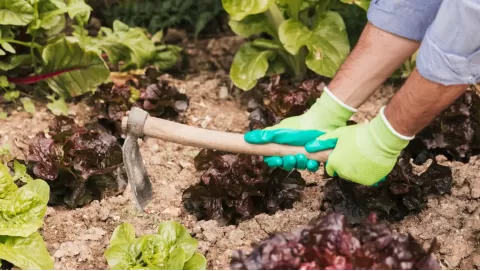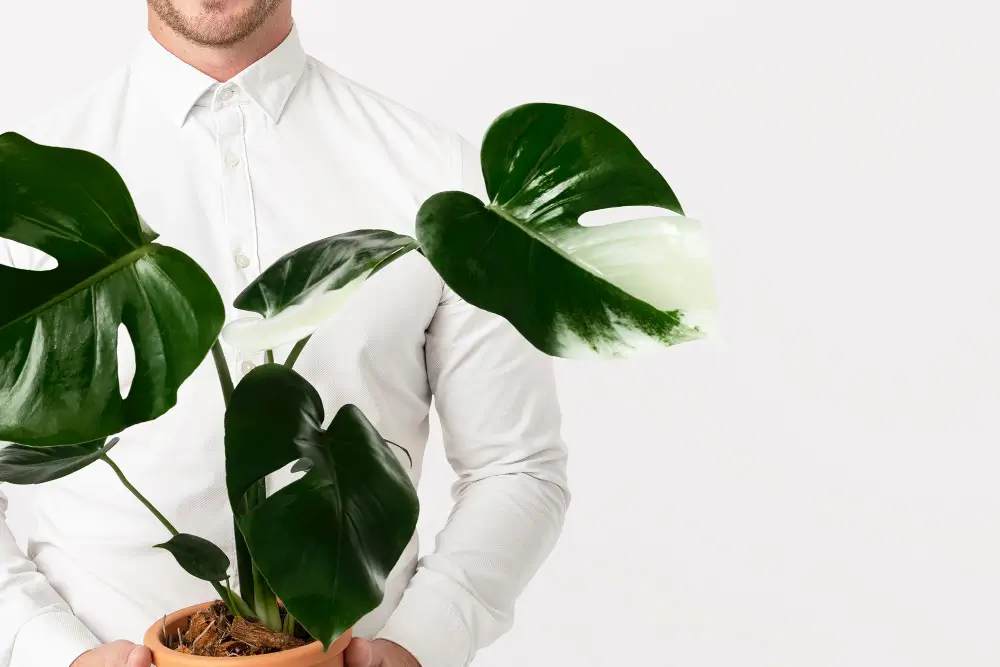
Monstera care guide: Growing and caring for Swiss Cheese Plant
Indoor gardening is a really popular one these days; the indoor planting trends have drawn quite a few people into planting in their homes. This trend is increasing for multiple reasons, especially adding beauty and deriving many advantages from indoor planting. Plants cleanse the air through absorbing CO2 and releasing oxygen.
Monstera deliciosa is one of the most widely used plant species in home gardening. However, this plant is also known as the Swiss cheese plant because of its unique leaves. It has holes and splits in the leaves, making them visually interesting. The Monstera is low-maintenance and thrives in indirect light, requiring just a little water. That makes it an excellent option for anyone, from novice to wizened plant parent. With proper care, the Monstera can grow large and transform a standard room into an atmospheric space.
Growcycle has a good range of gardening equipment, tools, and fertilizers to help Monstera plants grow healthier. They have all of the nutrient solutions so that each Monstera plant is painstakingly cultivated, so it is healthy and primed to thrive in your own home. The care, and hence quality, comes first for them so all you have to do is relax and enjoy gardening without worrying because each Monstera is nurtured well.
History and Origin
The Monstera, also called the Swiss Cheese Plant, is a tropical vine that comes from the rainforests of Central and South America. The name "Monstera" comes from a Latin word that means “monstrous“. This name flaunts the plant’s large, striking leaves, which almost look magical.
Monstera is part of the Araceae family, which includes flowering plants primarily found in warm, tropical regions. This plant thrives particularly with aerial roots and a natural talent for climbing, which allows it to flourish in the dark corners of rainforests.
Botanical Description
The Monstera plant is known for its enormous, shiny, heart-shaped leaves with distinctive splits and holes. In its native habitat, these leaves can stretch to 36 inches long, letting light filter down to include the plant's lower reaches.
The broad leaves of Monstera exude a dramatic style and can transform any area into a statement. The color also adds ambience, so even the most boring places become brightened with life. Light filters through the leaves, and light and shadow dance. This makes the entire area feel welcoming and adds a certain charm.
Monstera plants often grow on other plants, using their aerial roots to climb trees and find sunlight. Outdoors, they can grow as high as 840 inches tall, but under proper care, indoors, they typically reach approximately 72 to 84 inches.
The plant blooms into an inflorescence that resembles a calla lily, with a white outer portion encasing a central spike. While it rarely flowers indoors, outdoors, these blooms might develop into edible fruit, tasting sweet and tropical. Monstera plants thrive in indirect sunlight, high humidity, and well-draining dirt, which is one of the reasons they’re so popular for growing indoors.
Salient Features of Monstera Plant
Here are few important characteristics of this plant:
- Adaptability
Monstera enjoys the spotlight because it grows well in many locations. This plant can tolerate partial shade, strong, and indirect sunlight. It’s a great fit for many places at home and can tolerate a range of humidity and temperature conditions. This plant is easy to maintain, which is why it is the best choice for all gardening lovers.
- Climbing Habit
Monstera tends to climb in nature, so it can be supported by pretty much anything. With the use of stakes, moss poles, or trellises, this plant can create a dramatic vertical presence, providing visual interest and dimension to any indoor setting.
- Air Purification
It is an amazing air purifier and looks beautiful. Like many others you might find in homes, it works hard to remove harmful toxins from the air, making for a healthier space to breathe. Monstera can have a really positive impact on your air quality; they help every room feel extra fresh and welcoming.
- Edible Fruit
When this plant reaches full maturity, it grows a fruit that resembles a green cone. “Ceriman” the name of this fruit. It is edible and tastes like a cross between a banana and a pineapple. But be careful! You also need to properly prepare the fruit. The unripe fruit contains oxalic acid that can be harmful in high concentrations. Be sure the fruit is ripe before consuming it.
Types of Monstera Deliciosa
There are several different species of Monstera plants, and each species has its own unique attributes that can accommodate different preferences and home styles. Here are some of the interesting varieties you can expect:
- Monstera Deliciosa
The most common type of Swiss Cheese plant is the Monstera deliciosa. And it is different from other types because of its unique leaves and colorful growth. Give them adequate support and indirect light, and Monstera deliciosa can grow tall and beautiful.
- Monstera Adansonii
The Monstera adansonii, or the “Monkey Mask,” has smaller leaves with a lot of holes, making them look light and airy. This plant makes an excellent trailing or hanging basket plant. It adds a unique touch to any space.
- Monstera Borsigiana
Just as with Monstera, Monstera borsigiana has beautiful fenestrated leaves. But this is a smaller, more compact version of this plant. As such, it is great for gardeners who still want Monstera plants in their home, but don’t want a heavier maintenance plant.
- Monstera Obliqua
Another mega-rare Monstera species is Monstera obliqua! The leaves themselves are frail and very holed. Just this unique look makes it quite popular among collectors. But this particular plant requires additional care and need specific conditions to flourish.
- Monstera Siltepecana
Distinguishing the Monstera siltepecana from other Monstera is its long leaves that shimmer with a beautiful silver color. The plant grows best in bright, indirect light. You make any room look more sophisticated and lovely by including this plant in your collection.
How to Choose the Right Type of Plant?
Select the right type of Monstera for a certain space can be done by taking into account several things, such as the light intensity and the care the plant requires. Monstera and Monstera adansonii thrive in bright, indirect light, bringing life to the room with their big leaves and impressive shapes.
In tighter spots or for those who prefer a smaller plant, Monstera borsigiana is also a good fit. And it offers the same iconic look without hogging space. Plant enthusiasts seeking something more unique might turn their gaze to Monstera obliqua, but it requires more attention.
When selecting a Monstera plant, it’s worth keeping in mind the way in which the plant grows. Monstera adansonii is one of those hanging or trailing varieties that can add so much vertical flourish. Once you know your space and what pairs well with it, you can choose the perfect Monstera to adapt to your home’s environment and look.
Growing and Caring for Swiss Cheese Plant
Monstera should follow these steps to grow properly:
Appropriate Soil
It is essential to select the appropriate soil for Monstera so it can thrive. Well-drained, nutrient-rich potting mixes are best for this type of growth. This allows air to penetrate the roots while retaining sufficient moisture. It is a great mix of orchid bark, perlite, and peat moss.
Peat moss tends to keep the soil moist but not overly so, and perlite prevents excess water from accumulating, which can lead to root rot. Incorporating compost will add the nutrients for healthy growth. When repotting, soil that is slightly acidic to neutral (between 6 to 7) allows the plant to absorb nutrients more efficiently. You can check this with pH meters.
Proper Watering
Watering Monstera is an important part to keep the plant healthy. This plant likes to allow the top inch or two of soil to dry out before watering again. They need to be watered once or twice a week, depending on the temperature and humidity in your region.. Be sure to give the soil a poke with your finger before watering. If the soil is dry when you check, it’s time to water.
Water thoroughly enough for it to drain out the bottom of the pot. This system ensures that the roots receive adequate moisture. Do not soak the plant in water; it can lead to root rot. The schedule may vary from season to season as the plant grows more slowly in winter.
Adequate Lighting
Monstera plants need light because it is critical to their health. This plant prefers bright, indirect light — the kind that grows in the leavened sun of rainforest canopy. The plant gives its best when filtered light comes in near a window.
Too much sunlight exposure can result in dark patches or crispy edges on the leaves. While Monstera can survive in low light, it will grow at a slower pace and may not split its leaves as often. Sometimes, rotating the plant so it can get light on all sides helps it grow healthily.
Temperature and Humidity
Monstera plants thrive best in warm, humid settings, with a sweet spot for temperatures between 65°F and 85°F (18°C to 29°C). They’re not fans of the cold, so it’s best not to expose them to drafts or temperatures below 55°F (13°C).
Monstera plants prefer humidity of 60% or higher. Though they can acclimate to routine indoor humidity, raising the humidity by misting the leaves, setting up a humidifier, or putting the plant on a tray of rocks and water will help it thrive, especially in drier environments.
Impact of Container Type on Monstera Growth
Selecting the right pot for a Monstera should be an essential factor in its successful growth. A pot must have drainage holes to prevent water from sitting at the bottom. Water pooling can actually harm the roots. Terra cotta pots are good because they allow excess moisture to escape. They also let air reach the roots, which is key to keeping the plant healthy.
Selecting the right size pot for a Monstera plant is very important. A pot that’s too small won’t allow roots to spread, and the plant will suffer. Alternatively, a pot that’s too big could pool too much water, effectively suffocating the roots. Pot larger than the roots is the best choice. It helps to make the plant feel stronger and healthier.
It is essential to repot Monstera every few years. This aerates the soil, and allows the roots to spread out further. Spring is a great time to repot as the plant is growing more aggressively.
Benefits of Monstera Plant
Below are some essential benefits of Monstera plants:
Aesthetic Appeal
Monstera plants are famous for their large, unique leaves that are very eye-catching. They are stunning additions to any space. Both modern and classic rooms benefit from the vivid green color and strong shapes. A Monstera is a little piece of nature indoors. They work well with many types of decorating styles.
Stress Reduction
Monstera and other houseplants are known to decrease stress and improve mood. Even indoors, nature can make people feel better. Plants can help reduce feelings of anxiety. Green foliage also gives a serene sense in any space and at home or in the office, making a peaceful and calm surrounding.
Improved Focus and Productivity
Plants improve workspaces. They assist with focus and may raise productivity. A Monstera plant has lovely, unique leaves that can be a lovely reprieve from staring at your screen for too long. This plant helps clear the mind and stimulates creativity when it is nearby. If there’s a Monstera in an office or study, the entire ambiance of the space feels more pleasant. Such a switch can aid in getting people to focus and think more creatively.
Tips and Tricks for Thriving Monstera
Here are some must-know tips and tricks for healthy Monstera plants:
- Fertilize Regularly
To provide your Monstera plant with the nutrients it needs for robust growth, be sure to feed it with a well-balanced liquid fertilizer once per month spring and summer. Feeding it regularly allows the plant to grow and maintains the leaves bright.
- Prune as Needed
You should prune the plant regularly to keep your plant healthy. Cutting off dead or yellowing leaves allows for proper growth. It also helps the plant shape, somewhat. Trimming long stems can keep the overall size manageable, making for a more visually pleasing display.
- Propagating
Monstera are easy to propagate, and several methods are used to propagate them, such as propagation into water, propagation into soil, air layering, and root division. The most common and easiest method is via stem cuttings. Take a section of the plant just below a node with at least one healthy leaf. Then you can set the cutting into a clear glass of water (which you will need to change at least weekly) until roots develop, or you can set it directly into the soil.
- Support Growth
A moss pole or trellis is also a great idea for growing Monstera plants. The setup allows the plant to climb, just as it does in the wild. Climbers strive upwards, in search of space and light, giving rise to larger, more ornamental leaves that make the foliage more attractive.
- Monitor for Pests
General houseplant foes such as aphids and spider mites are a potential threat to any Monstera plant. The plant’s continued good health hinges on early detection of these pests. When those unwelcome guests do appear, they can be easily repelled with insecticidal soap or neem oil. Preventing pests on the plant helps remain vigorous and healthy.
Challenges and Solutions for Plant Care
Monstera plants are vigorous. But they can have some common issues that require attention.
- One common problem with ficuses is yellow leaves, which happen when drainage is poor or the plant gets too much water. To remedy this, plant in a well-draining potting mix. The watering schedule also needs to be adjusted to keep the plant healthy.
- Pests like spider mites and mealybugs attack Monstera plants. Monitor the leaves often to see if there are any bugs. If pests are found, use insecticidal soap or neem oil to kill them. Isolating sick plants from healthy ones can help prevent the spread of insects.
- If Monstera leaves are splitting, too little light is likely the cause. You can try moving the plant to a brighter location; this change might encourage those lovely splits in the leaves to appear. A sunnier spot will make the plant appear healthier and more vibrant.
FAQs
How often should I water Monstera plants?
Soil that is dry on top indicates it is time to water the Monstera plants. Get some measure to the first inch. This keeps the plant healthy. Too much water is not good. It can damage the roots and even rot. Monitor the soil to see that the right amount of water is applied.
Can Monstera be grown outdoors?
In warm climates, Monstera typically grows best outdoors. It thrives in tropical and subtropical climates. You can offer this plant some shade to protect it from being burned under direct sunlight. That way, the plant remains happy and healthy. Additionally, it must be shielded from inclement weather to remain secure.
What should I do if Monstera's leaves are turning brown?
Only water a Monstera plant when the top inch of soil looks dry. It can be dangerous for the plant because overwatering it can lead to root rot. Monitor the soil moisture to creates a good environment for Monstera.
The Bottom Line
Monstera plants bring a unique touch of nature in any home and can make individual spaces more beautiful and distinctive. Getting the type that works and supporting its growth makes the adventures enjoyable while dealing with the challenges and benefits straight out of the plant's administration making it a fruitful excursion to develop these beautiful plants.
Growcycle offers some of the best Monstera plants and tools to keep them healthy and growing. Each plant is given the best possible care so that it grows strong and produces beautiful leaves. This emphasis on quality means that a Monstera will thrive at home, bringing an attractive, natural presence to any room.
Disclaimer: This material is for informational purposes only and should not be relied on for legal, medical, financial, or other professional advice.



